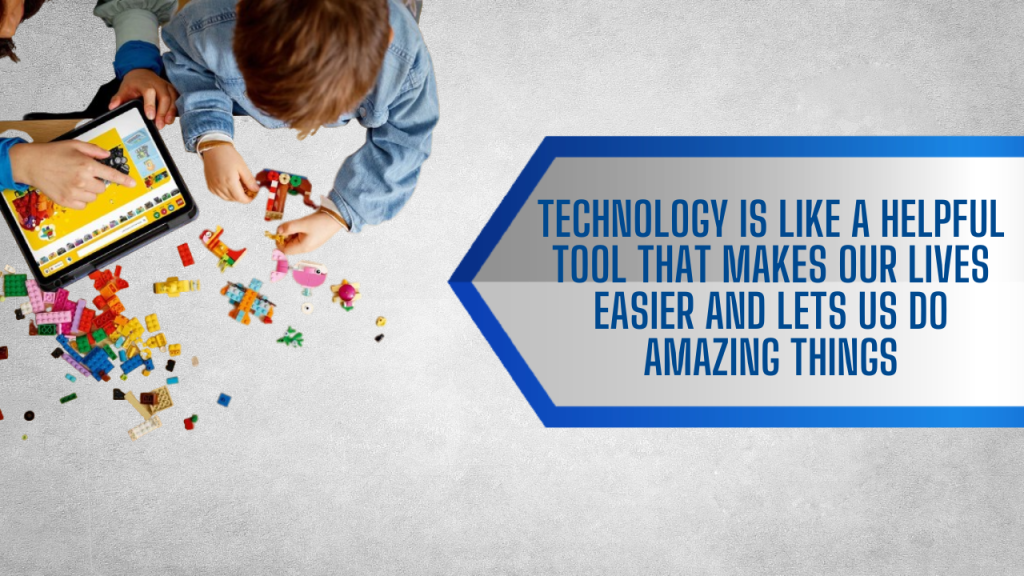Creating tech-free zones and times for children is crucial for their physical and mental well-being, as well as for fostering healthy relationships and balanced development.
Importance:
Creating tech-free zones for children is of paramount importance in today’s digital age. These zones offer children a respite from the constant screen exposure that has become ubiquitous in their lives. Such breaks allow them to engage in activities that foster physical, mental, and emotional development, promoting a more balanced and healthier lifestyle.
Tech-free zones play a crucial role in safeguarding children’s mental health. Excessive screen time, especially before bedtime, can disrupt sleep patterns, leading to sleep deprivation and its associated problems, such as mood swings and poor academic performance. By designating specific tech-free times, parents and caregivers can ensure that children get the restorative sleep they need for optimal growth and well-being.
Moreover, tech-free zones encourage children to interact with their surroundings and peers. Children who spend too much time on screens may miss out on valuable opportunities to develop social skills, empathy, and creativity. These zones create space for face-to-face interactions, imaginative play, and physical activities that are essential for their holistic development. In sum, tech-free zones are a cornerstone in nurturing well-rounded, healthy, and socially adept children in the digital era. Here are some steps you can take to establish tech-free zones and times for children:
Set Clear Guidelines:

Setting clear guidelines for tech-free zones and times is essential for establishing healthy boundaries around technology use for children. By defining specific areas and timeframes where technology is not allowed, parents and caregivers create a structured environment that promotes balanced screen time habits.
Common areas where technology should be restricted include the dining room, bedrooms, and during family gatherings or meals. The dining room is a crucial space for fostering family connections, and making it a tech-free zone encourages meaningful conversations and quality time together. Bedrooms, on the other hand, should be a sanctuary for rest and relaxation, free from the distractions of screens. By designating these areas as tech-free zones, children are more likely to engage in activities that promote physical, mental, and emotional well-being.
Additionally, determining the duration of tech-free times, such as during homework, before bedtime, or on weekends, ensures that children have designated periods when they can focus on other essential aspects of their lives. For instance, tech-free homework time encourages concentration and academic success, while tech-free periods before bedtime promote better sleep hygiene and mental relaxation. On weekends, limiting screen time creates opportunities for outdoor play, hobbies, and quality family interactions, contributing to a well-rounded and balanced lifestyle for children.
Involve the Family:
Involving the entire family in the establishment of tech-free zones and times for children is a crucial step in ensuring their success. It creates a collaborative environment where everyone understands the importance of reducing screen time and actively participates in making it happen.

When families come together to discuss and implement tech-free zones, it promotes a sense of unity and shared responsibility. Parents can explain the reasons behind these rules, emphasizing the benefits for everyone’s well-being, including improved communication and more quality time spent together. Children, in turn, feel heard and included in the decision-making process, which can lead to greater compliance with the tech-free guidelines.
Moreover, involving the family creates a support system for children. Siblings can hold each other accountable, and parents can lead by example, demonstrating responsible screen time habits. It’s also an opportunity for parents to educate their children about the potential negative effects of excessive screen time and the importance of balance in their lives. Ultimately, involving the family in creating tech-free zones fosters a healthier, more harmonious home environment where everyone can thrive.
Lead by Example:
Leading by example when it comes to tech-free zones and times for children is a powerful and effective way to instill healthy screen time habits in your family. Parents serve as role models, and their behavior sets the tone for children’s screen usage. By limiting your own screen time during tech-free periods and actively engaging with your family, you send a clear message about the importance of being present and prioritizing real-life interactions.

Children learn from observing their parents, so when they see their parents consistently adhering to tech-free guidelines, they are more likely to follow suit. This practice not only reinforces the importance of these zones but also fosters a sense of unity within the family. It provides opportunities for genuine connection and meaningful conversations, which are essential for building strong relationships.
Being present and engaged with your family during tech-free times can lead to a host of benefits, including improved communication, enhanced bonding, and the development of essential social skills. It also allows for quality family time, which contributes to a healthier and happier family dynamic. By modeling this behavior, parents not only help their children develop responsible screen time habits but also create a more fulfilling family life.
Create Tech-Free Spaces:
Creating designated tech-free spaces in your home is a practical and effective way to encourage balanced screen time habits for children and promote meaningful family interactions. These spaces serve as sanctuaries where screens are intentionally left behind, allowing for a break from digital distractions and fostering a focus on real-life activities.

To establish tech-free zones, choose specific areas in your home, such as the living room or dining area, and clearly define them as screen-free environments. Ensure these spaces are comfortable and inviting, with cozy seating arrangements and easy access to activities like reading materials, board games, or puzzles. By making these spaces enjoyable and conducive to family activities, you create an environment where both adults and children are motivated to engage in screen-free pastimes.
Tech-free spaces not only provide a physical separation from screens but also send a powerful message about the value of face-to-face interactions and shared experiences. They encourage family members to gather, connect, and bond without the distraction of technology, helping to strengthen relationships and create lasting memories. In these designated zones, you can rediscover the joy of traditional, screen-free activities and create a home environment that prioritizes real-life connections and quality time together.
Use Technology as a Tool:

Encouraging children to use technology as a tool for learning and productivity is a balanced approach to screen time management. Technology can be a valuable resource to support education and skill development when used mindfully and purposefully. One effective way to integrate technology as a tool is by designating specific times for homework or study sessions where access to educational apps, research websites, and digital tools is permitted.
During designated homework or study time, parents and educators can guide children in using technology effectively. For example, they can recommend age-appropriate educational apps, provide access to digital libraries, and teach research skills for online learning. By doing so, children can harness the benefits of technology to enhance their academic performance and gain valuable digital literacy skills that are essential in today’s world.
Additionally, emphasizing the role of technology as a tool for productivity can help children develop a responsible and balanced relationship with screens. When they see technology as a means to achieve academic success and personal growth, they are more likely to use it purposefully and avoid excessive and distracting screen time. This approach not only supports learning but also helps instill lifelong habits of responsible tech use.
Celebrate Tech-Free Moments:

Celebrating tech-free moments within your family is a powerful way to reinforce the importance of screen time boundaries and motivate everyone to continue adhering to them. Positive reinforcement and recognition for successfully embracing tech-free zones and times can make the experience more enjoyable and encourage lasting compliance.
To celebrate tech-free moments, consider creating a family ritual or tradition. For instance, you can have a special “screen-free Sunday” where the entire family engages in fun activities together, like hiking, playing board games, or cooking a meal together. Acknowledge and praise your children for their participation and enthusiasm during these tech-free moments, highlighting the value of quality family time. This positive feedback helps children associate tech-free periods with enjoyable experiences and fosters a sense of accomplishment.
In addition to family rituals, you can establish a rewards system. Set achievable goals for tech-free periods and offer small incentives or privileges as rewards when those goals are met. For example, completing a week of tech-free evenings might earn children a movie night or a special dessert. Celebrating these achievements not only motivates children to stick to the rules but also reinforces the idea that tech-free time is something to be proud of and celebrated. This positive approach helps create a healthy attitude toward screen time management within the family.



Leave a Reply